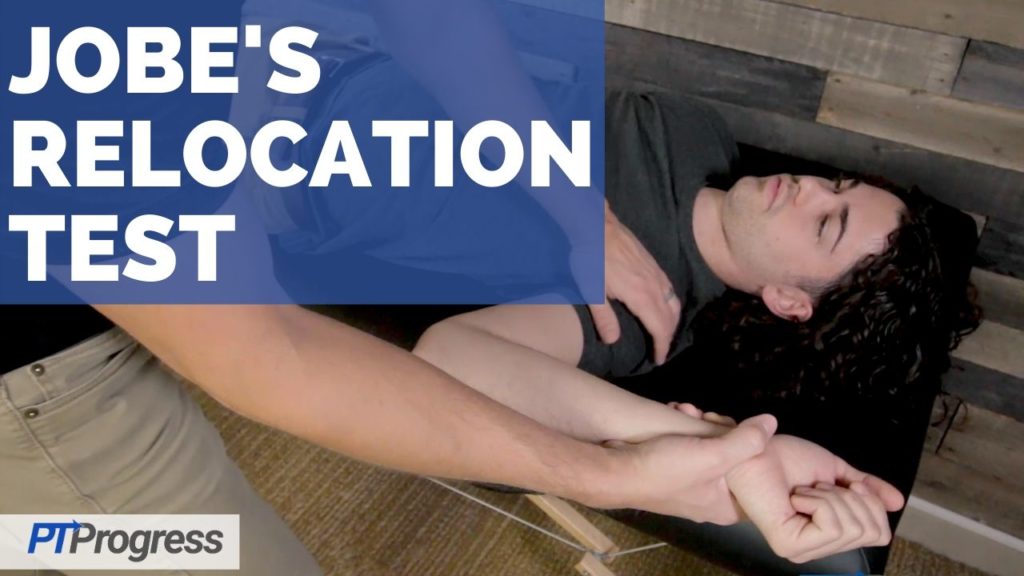
Jobe’s Relocation Test is used to help identify shoulder instability and is considered one of the best tests for identifying this pathology, especially when paired with the apprehension test.
How to Perform Jobe’s Relocation Test
Position of Patient: The patient is supine lying at the edge of the examination table.
Performance: The examiner places the patient’s arm in 90 degrees of abduction, full external rotation, and 90 degrees of elbow flexion. If the patient experiences pain or apprehension the examiner will place a posterior force on the head of the humerus to complete the test.
How to Interpret Jobe’s Relocation Test
Positive Finding: The test is considered positive if the patient experiences relief of pain as the posterior force is applied to the shoulder.
Test Accuracy / Reliability / Evidence:
Sensitivity and Specificity & Likelihood Ratio
Sensitivity = 0.30
Specificity = 0.90
+LR = 3.0
– LR = 0.77
Source: Farber AJ, Castillo R, Clough M, et al: Clinical assessment of three common tests for traumatic anterior shoulder instability. J Bone Joint Surg Am 2006; 88: pp. 1467-1474
Relocation Test Video
The Jobe’s Relocation Test is used to help identify shoulder instability and is considered one of the best tests for identifying this pathology, especially when paired with the apprehension test.
To perform the Jobe’s Relocation test, position the patient in supine lying at the edge of the examination table.
The examiner places the patient’s arm in 90 degrees of abduction, full external rotation, and 90 degrees of elbow flexion. If the patient experiences pain or apprehension the examiner will place a posterior force on the head of the humerus to complete the test.
The test is considered positive if the patient experiences relief of pain as the posterior force is applied.
For more shoulder tests, visit the Shoulder Special Test Page

